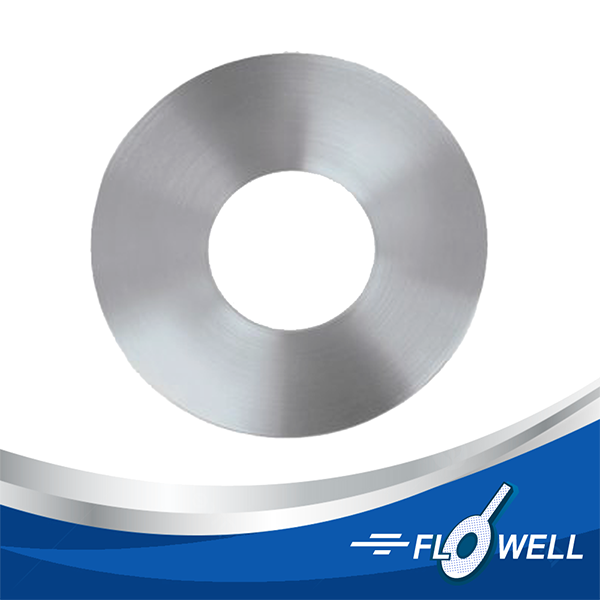
What Are Orifice Plates and Why Choose Universal-Type Orifice Plates?
Key Reasons to Use Orifice Plates for Accurate Flow Measurement
- Precision & Simplicity: Orifice plates create a precise pressure drop correlated to flow.
- Cost-Effective: Simple design means lower manufacturing and maintenance costs.
- Versatility: Suitable for liquids, gases, steam; many material and type options.
- Standards-Compliant: Designed per ASME, ISO 5167, AGA for reliable calibration.
- Wide Applications: Oil & gas, chemical, water treatment, power, HVAC, and more.
Visualizing Flow vs Pressure Drop
Below is a sample curve demonstrating how pressure drop increases with flow rate
(quadratic relationship) which underpins orifice plates flow measurement.
Orifice Plate vs. Other Flow Meters
Comparing common options helps decide the best fit:
| Feature | Orifice Plate | Venturi Meter | Turbine Meter |
|---|---|---|---|
| Installation Cost | Low | High | Medium |
| Pressure Loss | Higher permanent loss | Lower permanent loss | Low to Medium |
| Accuracy | Good when installed per guidelines | Higher accuracy at certain flows | High for clean fluids |
| Maintenance | Easy inspection & cleaning | Moderate | Higher (moving parts) |
| Best For | General-purpose, budget-sensitive, varied media | Critical accuracy, high-cost justified | Clean fluids needing high precision |
Design, Sizing, and Material Selection
Key considerations when designing or selecting an orifice plate:
- Orifice Plate Types: Concentric, eccentric, segmental—choose based on fluid properties (e.g., solids, multiphase) and installation.
- Material Selection: Stainless steel, Monel, Hastelloy, carbon steel, etc., chosen per corrosion, temperature, and mechanical needs.
- Sizing & Calculations: Use an orifice plate calculator or software for accurate orifice plate sizing and flow rate formula; factor density, viscosity, allowable pressure drop.
- Standards Compliance: Adhere to ASME, ISO 5167, AGA methods for calibration and repeatability.
- Installation Guidelines: Ensure sufficient straight-run piping, correct orientation, proper tap locations, and gasket selection.
- Pressure Drop Management: Balance measurement accuracy with acceptable energy loss; review orifice plate pressure drop impacts on system.
Frequently Asked Questions About Orifice Plates
What are orifice plates used for?
Orifice plates are used to measure fluid flow by creating a controlled pressure drop across a bore. The differential pressure correlates to flow rate using standard equations.
How does the orifice plate function in flow measurement?
The orifice plate function relies on differential pressure upstream and downstream of the plate. This pressure drop is proportional to the square of flow rate, enabling accurate readings when calibrated.
What is the difference between orifice plate vs venturi meter?
Compared to a venturi meter, an orifice plate is simpler and less expensive but can result in higher permanent pressure loss. Venturi offers lower loss and potentially higher accuracy in some flows but at higher cost and installation complexity.
How is orifice plate flow measurement performed?
Flow measurement is performed by installing the plate inline, measuring differential pressure, and applying ISO 5167 or ASME equations with bore size and fluid properties to compute flow rate.
What are key orifice plate installation guidelines?
Follow guidelines: ensure straight-run piping upstream/downstream, correct plate orientation, proper tap locations, use recommended gaskets, and avoid disturbances to maintain accuracy.
What types of orifice plates are available?
Types include concentric, eccentric, segmental, and quadrant-edge. Selection depends on fluid characteristics, installation constraints, and measurement goals.
How often should orifice plate maintenance be performed?
Maintenance depends on fluid abrasiveness and conditions. Schedule inspections for wear or corrosion, clean buildup, and recalibrate as needed to sustain accuracy.
How do you determine orifice plate sizing?
Determine sizing via flow requirements, fluid density/viscosity, allowable pressure drop. Use an orifice plate calculator or software; consult experts to confirm calculations.
Can I use an orifice plate flow meter for different fluids?
Yes, but choose appropriate material and plate type for specific fluid properties and conditions (temperature, corrosion, abrasiveness).
Is there an orifice plate calculator for pressure drop?
Orifice plate calculators (based on ISO 5167/ASME) compute pressure drop and flow rate given bore dimensions and fluid data. Flowell can assist or recommend tools.
How do you design an orifice plate?
Designing involves selecting plate type, material, bore size, thickness based on fluid, flow conditions, allowable pressure drop, and standards compliance.
What are common orifice plate applications?
Applications: oil & gas pipelines, chemical processing, water/wastewater, power generation, HVAC—anywhere accurate flow data is critical.
What are the advantages and disadvantages of orifice plates?
Advantages: simplicity, low cost, ease of installation; Disadvantages: higher permanent pressure loss, wear sensitivity, accuracy depends on strict installation guidelines.
How do you choose an orifice plate for my application?
Evaluate flow range, fluid properties, pressure drop constraints, plate type, and material. Consult Flowell experts for tailored recommendations.